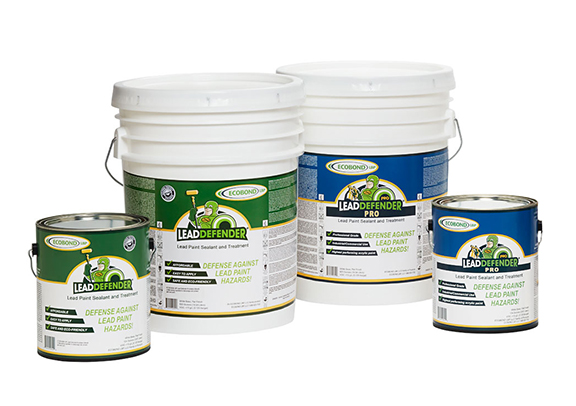 In 2015, Flint Michigan hit the media headlines across the nation, begging the world to notice and take action on behalf of the city's children who were being poisoned by high levels of lead in the water. With no intent to diminish the severity of danger in Flint, it is only fair to mention the widespread conditions of lead toxicity that hundreds and thousands are facing throughout the United States.
In 2015, Flint Michigan hit the media headlines across the nation, begging the world to notice and take action on behalf of the city's children who were being poisoned by high levels of lead in the water. With no intent to diminish the severity of danger in Flint, it is only fair to mention the widespread conditions of lead toxicity that hundreds and thousands are facing throughout the United States.
It's Not Time to Ignore the Danger
In the 1970s, manufacturers began dropping the use of lead in paint and gasoline; this resulted in a 90% decrease of lead poisoning across the nation; but according to an article on Public Radio International, children from over 3,800 neighborhoods in the United States still have blood lead levels that double those of the children in Flint; another article claims that around a third of these neighborhoods even produced blood lead levels as much as 4 times higher!
Many of these neighborhoods are historic areas that date back to the years when lead paint and plumbing was standard. Often in attempt to preserve historic accuracy, well-meaning parents retain original wallpaper, paint, or appliances that put their children at serious risks; steps are only taken to remedy the problem when the children are admitted into the hospital and lead poisoning is exposed.
Unlike Flint, most of these communities remain unnoticed by the media and are far less likely to receive funding to make the necessary changes in regard to lead safety. Nevertheless, it is time for home and business owners to take the dangers of lead poisoning seriously and be responsible for their part in restoring a safe environment for society, especially for the children.
Lead Paint Continues to Present a Danger to Families
Lead paint remains a potential danger for renters and homeowners whose houses were built before 1978. Although the federal government banned consumer usage of lead paint forty years ago, many old houses and housing communities continue to be at risk today. Low-income areas are particularly high-risk, as poor maintenance or improper care when remodeling can result in dangerous levels of lead exposure.
Lead poisoning is dangerous for people of all ages, but it is especially risky for children. People who have or are looking to start families should be especially wary of the dangers posed by lead poisoning. Chips and dust from lead paint are among the leading causes of lead poisoning in children. According to Michael Pell, a member of the Reuters team who researched US-based lead poisoning in 2016, there is no safe amount of lead in a child's blood system. Lead poisoning is especially dangerous for children under the age of six. It can cause damage to a child's hearing, kidneys, muscles, bones, and nervous system; it can also be a source of learning disabilities, speech and language difficulties, and behavioral problems.
There are a number of things people can do to ensure their household is protected from paint-based lead poisoning. Home tests can check for the presence of lead. If you do have lead paint in your house, keep painted surfaces well-maintained to avoid hazards such as chipping or paint dust. You can paint over it, if you're careful not to disturb the paint with sanding or scraping. If your house requires repairs or renovations, it is best to hire EPA- or state-approved contractors who are certified lead-safe. It is not recommended that homeowners remove lead paint themselves, as they may inadvertently expose themselves--or their children--to the very thing they are trying to avoid.
Why Are Children More at Risk?
Small children are more likely to suffer from lead poisoning due to their tendency to put things in their mouths such as chipped paint, or contaminated soil. Infants and toddlers are at crucial developmental stages as well, and neural growth can be negatively affected by lead in the blood.
Lead poisoning must be avoided at any stage of life, and we must be diligent in continually raising awareness of the sources of lead on the home-front until every child in America is safe from its threat.
How Exactly Children Are Exposed to Lead Based Paint
Many think lead-based paint is only harmful to young children, but its exposure is dangerous at all ages. It is important to know that lead exposure has much higher consequences in children though because they are still developing. While parents, landlords, homeowners, public buildings, schools, and more have all taken efforts to reduce or eliminate lead exposure, it still presents a serious issue today.
Paint dust or paint chips can enter through ingestion or inhalation. This happens when painted surfaces become disturbed, which can occur through day to day activity. Paint dust settles into floors and various surfaces. Paint ultimately chips off walls and becomes part of the house dust. This can contaminate the dust a house accumulates which can then be inhaled. It can also enter through typical hand to mouth activity. Children have a greater exposure to lead in these situations due to their natural habits of putting toys, pacifiers, and other objects in their mouths.
The best course of action to prevent lead exposure in the environment is elimination. Therefore the removal of lead paint has to be through a professional and done properly. A professional can care for the issue in a safe and effective manner, keeping anyone who may be exposed healthy and happy.
ECOBOND® Paint LLC is the Premier Provider of Environmental Products focused on protecting human health from the dangers of lead. Enjoy Peace of Mind from the Dangers of Lead Paint When You Use Our Proven & Patented ECOBOND® Family of Environmental Paints!
Now includes Bitrex® a bitter-tasting additive to discourage oral contact! In our Lead Defender formula, Bitrex® creates an added safety barrier to further protect children from lead poisoning by reducing the amount of paint chips or dust a child may ingest. Bitrex® is the bitterest substance known and is added to ECOBOND® to reduce accidental ingestion of potentially harmful materials.
Learn how ECOBOND® - Lead Defender® is different than Encapsulants and is a Lead-Based Paint Treatment
Buy Now!

